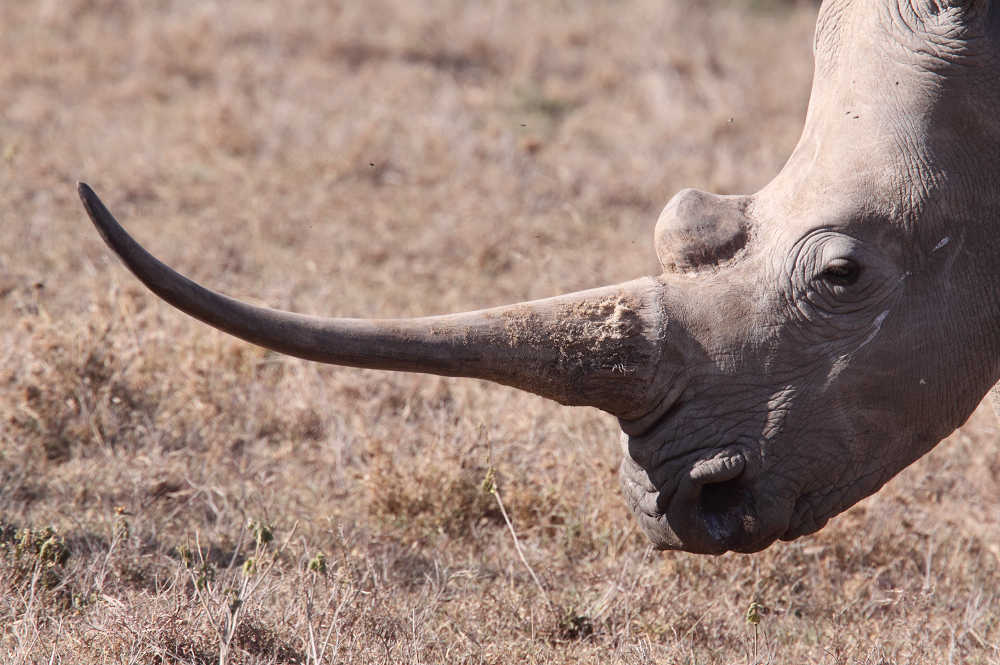A rhino’s horn (or horns) is what makes rhinos so unique to many people. It is their characteristic trademark, but what is a rhino horn made of? And why do they have them?
It’s often mistakenly reported that rhino horn is made of ‘compressed hair’, arising from the fibrous appearance of the horn, particularly around the base. And indeed, rhino horn is composed primarily of keratin, a protein also found in human hair and fingernails. But rather than being made of hollow fibres, rhino horn grows in layers from specialized skin cells in layers, which are keratinized (invaded by keratin proteins), becoming hard and inert, with all cellular function ceasing. At the centre of the horn, there are layers of calcium and melanin, two materials that help to keep it even tougher. Just like a horse’s hooves or a turtle’s beak, rhino horn is solid.
Three of the five rhino species have two horns, whilst the others – Greater one-horned rhinos and Javan rhinos – have only one horn (real life unicorns!). Though the horns of Asian rhinos are smaller than their African counterparts, they are all made of keratin.
On average, a rhino’s horn grows by around 2 cm each year, built up of many distinct keratin layers. Each layer differs in shape and colour, depending on factors such as the food the rhino has been eating, the temperature of its environment, and external damage.
Why is the horn a cone-like shape? Research suggests that if a rhino’s horn were to grow without any external damage, it may not be in the horn shape we all know today, instead remaining as a cylinder. However, sunlight can degrade the keratin fibres on the outside of the horn and common behaviour, such as scraping the horn on the ground, trees or rocks, protecting themselves from predators or other rhinos, and finding the best food to eat, create the cone-like shape we see.
Unfortunately a rhino’s iconic horn is also its biggest downfall. Rhinos are poached for their horns, which are trafficked to Asia and sold on the black market as medicine and as a symbol of wealth and status.
A version of this article was originally printed in our annual supporter magazine, The Horn.









